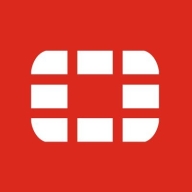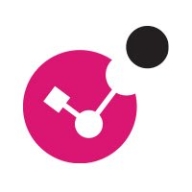


WatchGuard Firebox and Check Point Quantum Force (NGFW) compete in the network security category. WatchGuard is favored for its affordability and ease of setup, making it suitable for small to medium-sized businesses. However, Check Point is often preferred in environments with stringent security requirements due to its advanced security features.
Features: WatchGuard Firebox is praised for its ease of setup, intuitive configuration, and high performance in VPN setup. It includes robust security features like WebBlocker and routing functionalities. Check Point Quantum Force offers strong security capabilities, including intrusion prevention, advanced threat prevention, and application control, making it a top choice for comprehensive protection against sophisticated threats.
Room for Improvement: WatchGuard users suggest enhancements in reporting, third-party integrations, and user interface management for easier administration. There's also a demand for better endpoint protection and advanced threat analysis. Check Point users recommend simplifying the user interface, improving central management, and streamlining initial configuration processes.
Ease of Deployment and Customer Service: WatchGuard Firebox is lauded for its straightforward deployment in both on-premises and hybrid cloud environments, and it generally receives positive feedback on customer service. Check Point Quantum Force, though robust, presents a steeper learning curve, particularly in complex environments, but benefits from comprehensive documentation and support.
Pricing and ROI: WatchGuard Firebox offers competitive pricing, appealing to small and medium-sized businesses, and provides substantial ROI by combining affordability with reliable security features. Check Point Quantum Force, while priced higher, delivers exceptional security effectiveness, validating its cost for enterprises needing high-grade protection. Some users acknowledge its higher pricing but appreciate the value of its advanced security capabilities.
Clients are now comfortable and not wasting productive hours on IT support.
The automation part is giving us a cost benefit and speed; we can react faster.
It's a very useful tool to mitigate and protect your enterprise.
This is a time-saving measure because we don't need to deploy a cluster or a firewall each time; we just create a virtual system on the management server using the same appliance.
Incident response time has reduced significantly, and downtime due to network issues has been minimized, leading to an improved return on investment.
The fact that we've not had any breach toward the data center side is plenty enough.
The quick resolution of issues with Fortinet FortiGate is due to the support of the company and the fact that the equipment is easy to work with.
I would rate the technical support for Fortinet FortiGate a ten out of ten.
As a solution provider, when I encounter problems, I connect directly with Fortinet support, and they provide solutions within a very short time.
The support team we engaged was knowledgeable and well-versed with the application.
We have escalated issues to Check Point technical support multiple times and have received timely and very good responses.
Even challenging issues like those with VPNs have been resolved efficiently with their help.
On a scale of one to 10, I would rate the technical support of the WatchGuard Firebox a 10.
Finally, we connected with someone, and I would rate their support as eight or nine out of ten once we were able to speak with them.
The technical support is good.
They scale up really well from smaller models like the FortiGate 40 and 50 to bigger sites with the FortiGate 100 for more throughput - up to enterprise datacenters.
The variation comes in terms of the interfaces and throughputs, but from a security perspective, you get the same benefit, irrespective of whether you have an entry-level unit or an enterprise.
We determine sizing based on multiple factors: number of users, available links, traffic types, server count, services in use, and whether services will be published.
If specified correctly, even the smaller boxes offer high session and bandwidth rates, making the solution highly scalable, even up to telco-level requirements.
It is easy to scale up by adding capacity through clustering or upgrading the license, and it effectively handles spikes in remote user connections or increased east-west traffic without noticeable bottlenecks.
Scalability must be carefully planned for, considering future growth and user base increases.
The user interface and features compared to newer firewalls are not up to the mark, which includes functionalities such as filtering, web filtering, threat protection, user identity, and UTM features that need improvement.
If we're going for more concurrent users, we need to change the entire box.
I find the WatchGuard Firebox scalable, as it's easy to change configurations from this product to another one.
We're experiencing 99.999% availability consistently.
I would rate the stability of Fortinet FortiGate a ten out of ten.
Currently, we are experiencing a general outage of one of the main internet service providers of the Dominican Republic, and we have not been impacted in our operations because with SD-WAN, we have another internet service provider and we are working with the second WAN connection without any disruption.
While the solution is generally stable, there are complications, such as requiring SmartConsole for deployment and upgrades, which can be time-consuming.
I have worked with Check Point products for 15 years and haven't found any stability or performance issues.
The use of Check Point firewalls has helped improve our security posture without any downtime.
There are issues with traffic hitting the firewall, which could indicate performance problems related to throughput.
When considering Sophos XG, which we also use, the logging and reporting functionality is notably more efficient.
These sessions should be around five to ten minutes long, allowing users and partners to quickly grasp the information without disrupting their daily tasks.
The solution should be able to implement machine learning and analytics of all the logs for threat detection and protection.
AI-driven features would be highly valuable—particularly those that enable bulk operations and efficient handling of large numbers of objects or object groups.
One thing that would help in improving Check Point Quantum Force (NGFW) is having more flexible dashboards that I can tailor without relying on templates.
Other products, like FortiGate, are perceived as more intuitive because they are easier to configure from the start.
The cost for renewal after three years is 75% of the hardware cost, which is a significant problem.
When implementing a rule using a group of IPs, it is not possible to do that directly.
It is also difficult to diagnose issues if any devices get compromised; for example, if someone hacks our system, it becomes hard to trace who made changes or accessed the firewall.
Last year, I renewed the support for three years, which can sometimes be expensive but depends on the security benefits and how it helps us.
It offers cost savings as it is generally cheaper than the competition.
It is about 20% cheaper.
In comparison to Fortinet and other products, the pricing may be considered high.
licensing is very pricey
Compared to other solutions, the pricing of Check Point NGFW is high.
When we tried to renew the Palo Alto license, the cost was beyond any reasonable range.
It's expensive us here.
I have faced challenges with the WatchGuard Firebox regarding price since we work with customers who use the Stormshield product, which is less expensive and French-made.
These features help reduce our downtime, manage the ISPs, and deploy SLAs for all the website traffic.
The most valuable feature of FortiGate is FortiView which provides proactive monitoring.
We got a firewall and gave an SSL VPN to my client to connect to their servers, after which, such kind of activities involving ransomware attacks stopped.
The firewall's default behavior of blocking all traffic, including a cleanup rule that blocks everything from external to internal sources, is highly valuable for protecting our network.
The most valuable features in my experience include perimeter firewalling, cloud and mobile security, application control, URL filtering, DLP, threat prevention, intrusion protection, and safeguarding against malware, botnets, and zero-day attacks.
Since implementing it, we have noticed a lot less getting through that maybe other antivirus within firewalls had failed to catch.
The Firebox offers valuable features such as network security, URL filtering, UTM features, intrusion prevention and detection, and authentication.
Basically, we have received a good return on investment.
I utilize AI within the WatchGuard Firebox, as we use the interconnection with threat syncs, and AI is implemented.
| Product | Market Share (%) |
|---|---|
| Fortinet FortiGate | 19.1% |
| Check Point Quantum Force (NGFW) | 2.7% |
| WatchGuard Firebox | 2.7% |
| Other | 75.5% |



| Company Size | Count |
|---|---|
| Small Business | 357 |
| Midsize Enterprise | 132 |
| Large Enterprise | 188 |
| Company Size | Count |
|---|---|
| Small Business | 158 |
| Midsize Enterprise | 95 |
| Large Enterprise | 199 |
| Company Size | Count |
|---|---|
| Small Business | 92 |
| Midsize Enterprise | 25 |
| Large Enterprise | 15 |
Fortinet FortiGate is a versatile network security tool offering features like VPN, firewall, web filtering, intrusion prevention, and scalability. It is known for its performance and integration with other Fortinet products, making it a preferred choice for robust cybersecurity.
Fortinet FortiGate stands out as a comprehensive cybersecurity solution with strong performance and ease of configuration. It delivers unified threat management, integrating features such as dynamic routing, SD-WAN support, and centralized management. Despite its strengths, improvements in the web interface's stability, pricing structures, and reporting capabilities are needed. Users seek better integration with third-party tools and automation advancements to enhance the experience further. These enhancements, alongside improvements in bandwidth management and the reduction of licensing costs, are points of interest for users looking to capitalize on FortiGate's extensive capabilities.
What are Fortinet FortiGate's key features?Fortinet FortiGate is widely implemented across industries as a primary firewall system for securing internet gateways and safeguarding data centers. It supports businesses in achieving SD-WAN integration and enhances cybersecurity by providing essential features like antivirus, web filtering, and application control. Enterprises utilize FortiGate for securing remote connections and ensuring compliance with security standards, making it adaptable for different network sizes and industries.
Check Point Quantum Force NGFW provides centralized management with scalable security for network perimeters. As a reliable firewall, it ensures advanced threat prevention and offers seamless integration, making it suitable for various network environments.
Offering comprehensive security, Check Point Quantum Force NGFW helps control ingress and egress traffic, secures data center firewalls, and integrates seamlessly with cloud and on-premises setups. Users appreciate its application control, deep packet inspection, and identity awareness features for enhanced protection against cyber threats. Despite pricing issues and interface complexity, its IPsec VPN and robust logging provide valuable insights into network activities.
What are the key features of Check Point Quantum Force NGFW?Check Point Quantum Force NGFW is deployed across industries for securing network boundaries, supporting critical data center operations, and enabling secure VPN connections. In finance, it helps meet stringent compliance standards, while in healthcare, it's crucial for protecting sensitive patient data through robust security protocols.
WatchGuard Firebox is a high-performance firewall known for its ease of setup, offering robust security with layered protection and centralized management capabilities.
WatchGuard Firebox stands out for its intuitive management and high throughput, addressing security needs with features like VPN, web filtering, and threat detection. Its centralized control and reporting abilities, along with Active Directory integration, make it popular among varied organizations. Its user-friendly interface and ongoing updates enhance usability and reliability. However, there's a call for better cloud-based administration, scalability, and improved integration with third-party vendors.
What are the key features of WatchGuard Firebox?WatchGuard Firebox is implemented across industries to secure internet gateways and protect data in multi-site businesses. Its applications span from Unified Threat Management (UTM) and intrusion prevention to compliance support in business environments requiring secure connectivity through VPNs.
We monitor all Firewalls reviews to prevent fraudulent reviews and keep review quality high. We do not post reviews by company employees or direct competitors. We validate each review for authenticity via cross-reference with LinkedIn, and personal follow-up with the reviewer when necessary.